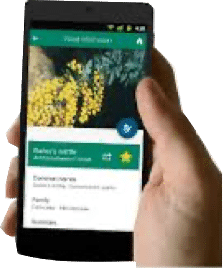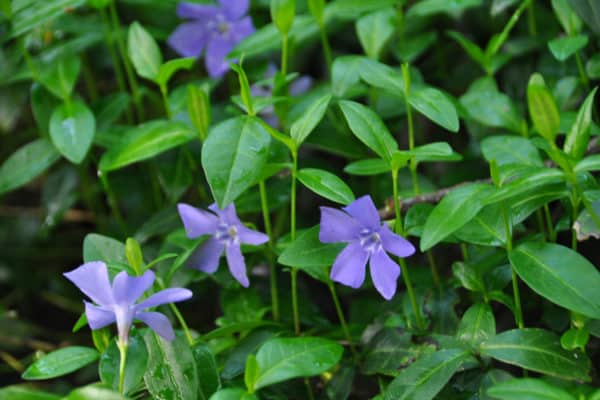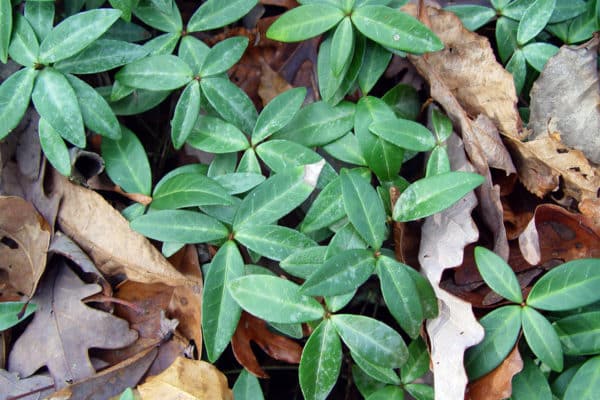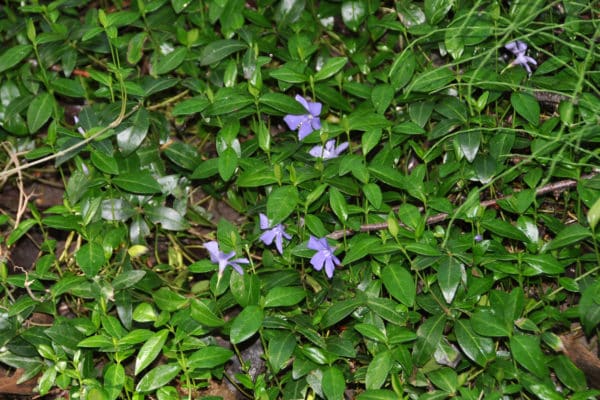Common periwinkle
About This Species
Common periwinkle (Lesser periwinkle, Dwarf periwinkle) was an ornamental groundcover popular for its fast growth and dense coverage that was deliberately introduced from Europe. However, it has since escaped captivity and spread rapidly through BC forest’s understories, choking out native plant species. Common periwinkle prefers shaded, moist conditions such as along water courses and in forested areas. It can reproduce through both seed and vegetatively. This species is one of the “top six” invasive species still sold throughout BC – be sure not to purchase or trade this plant!
How to Identify
Common periwinkle is a trailing plant and forms thick mats on the ground. It does not twine or climb trees.
Flowers are 20-30 mm wide, purple to white 5-petalled that are visible in late spring to early summer. Fruits are 3-5 cm long cylindrical pods.
Leaves are 3-9 cm long, glossy, dark green, and egg-shaped growing on long evergreen stems.
Take Action
Prevention is the best approach.
- Common periwinkle Factsheet PDF
-
If you need advice about invasive species on your property or you are concerned about reported invasives in your local area, contact your local government or regional invasive species organization.

Plantwise
Learn about best practices
A few non-invasive alternatives to plant instead of Common periwinkle include:
- Bunchberry (Cornus canadensis)
- False lily of the valley (Maianthemum dilatatum)
- Kinnickinnick (Arctostaphylos uva-ursi)
- Lowfast cotoneaster (Cotoneaster dammeri ‘Lowfast’)
- Redwood sorrel (Oxalis oregana)
REPORT TO PROTECT BC’S BIODIVERSITY

Use the app
Observe and report to protect BC’s biodiversity

Report through this website
Use our form to tell us what you’re seeing and where.



















